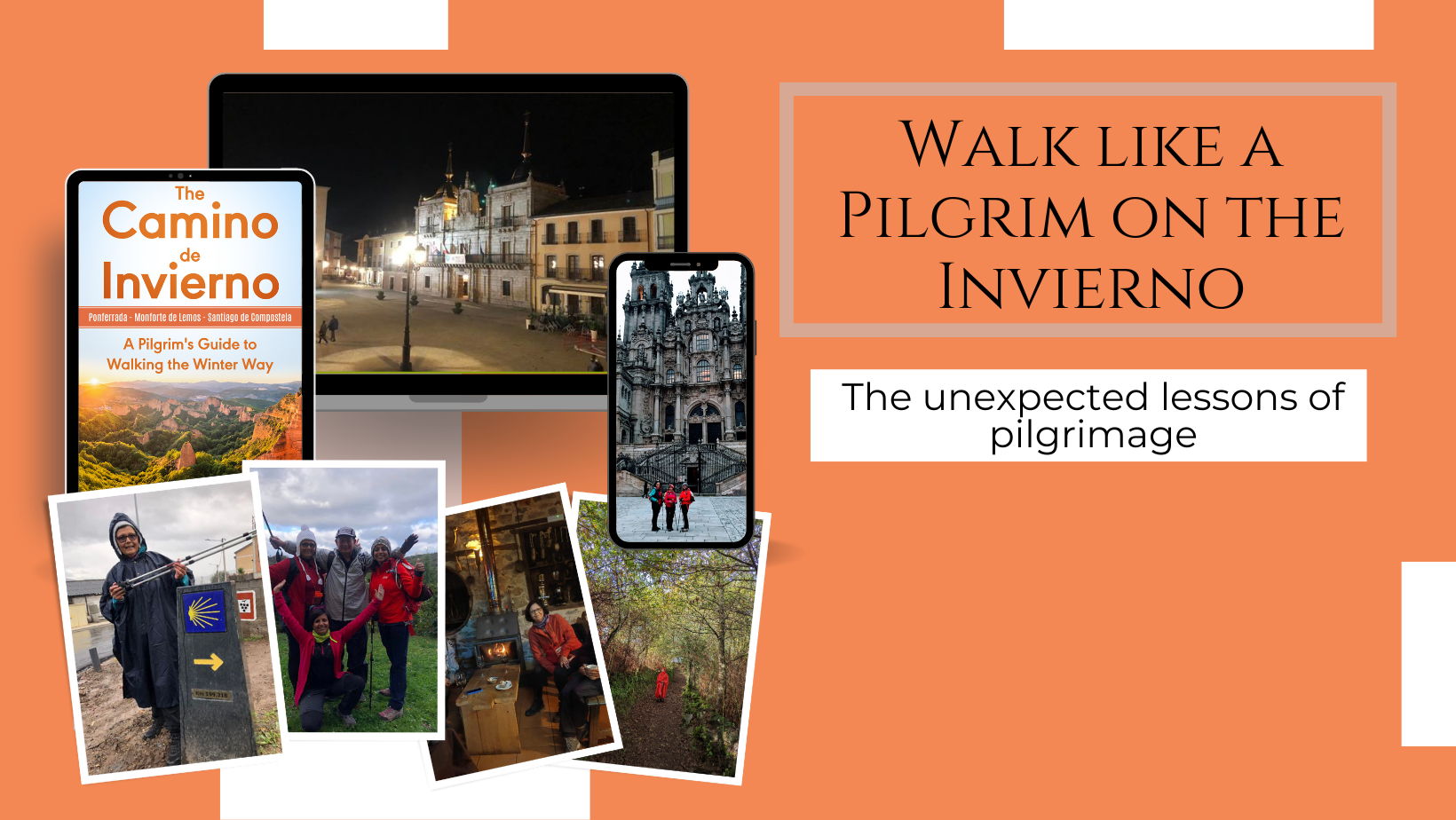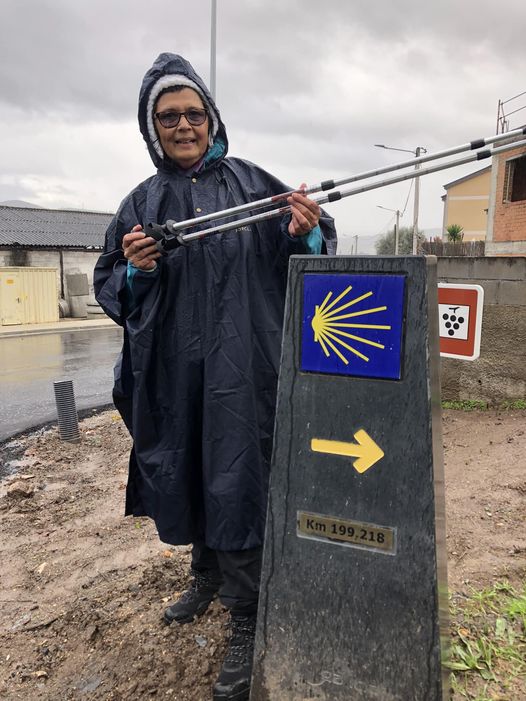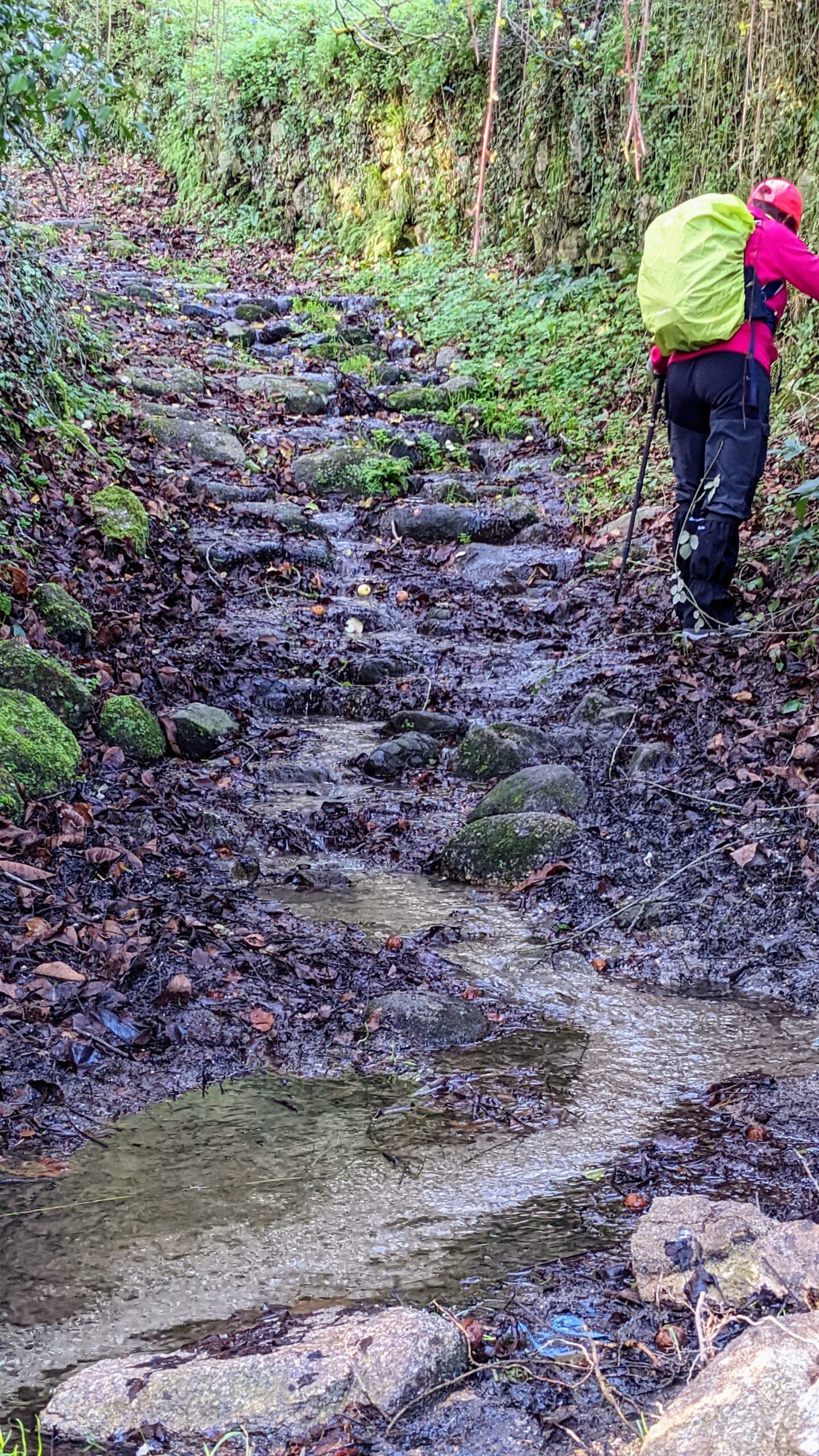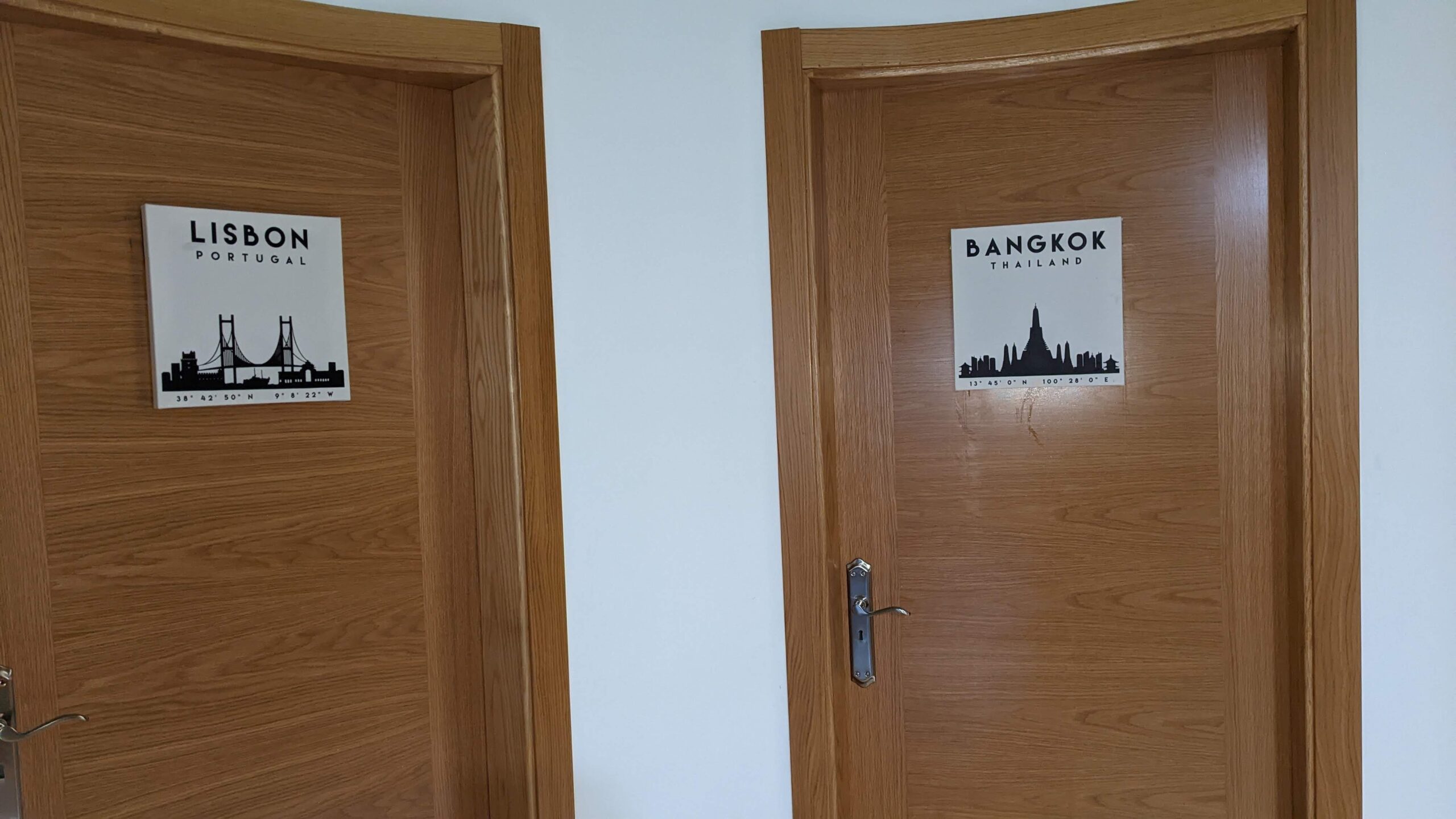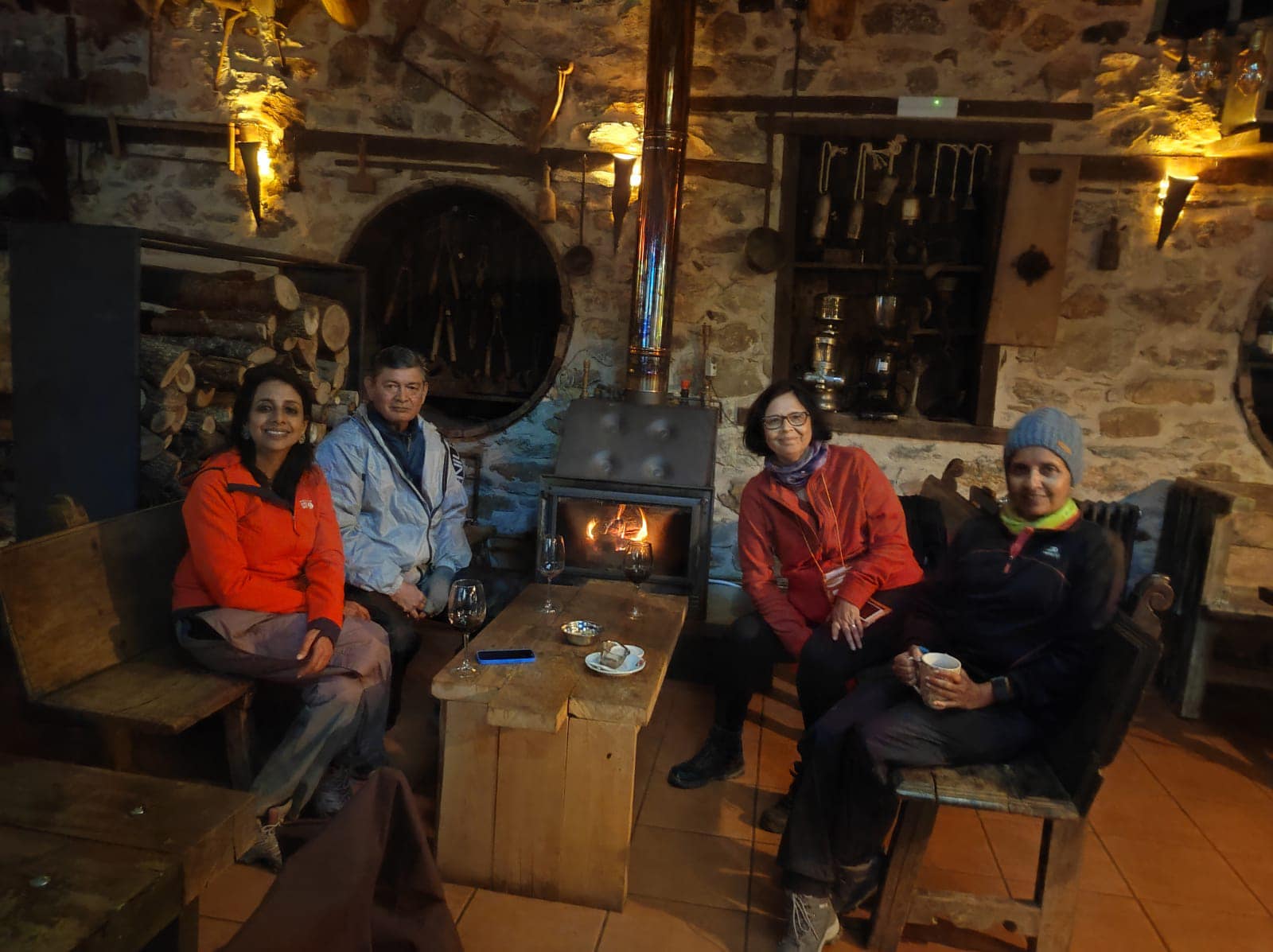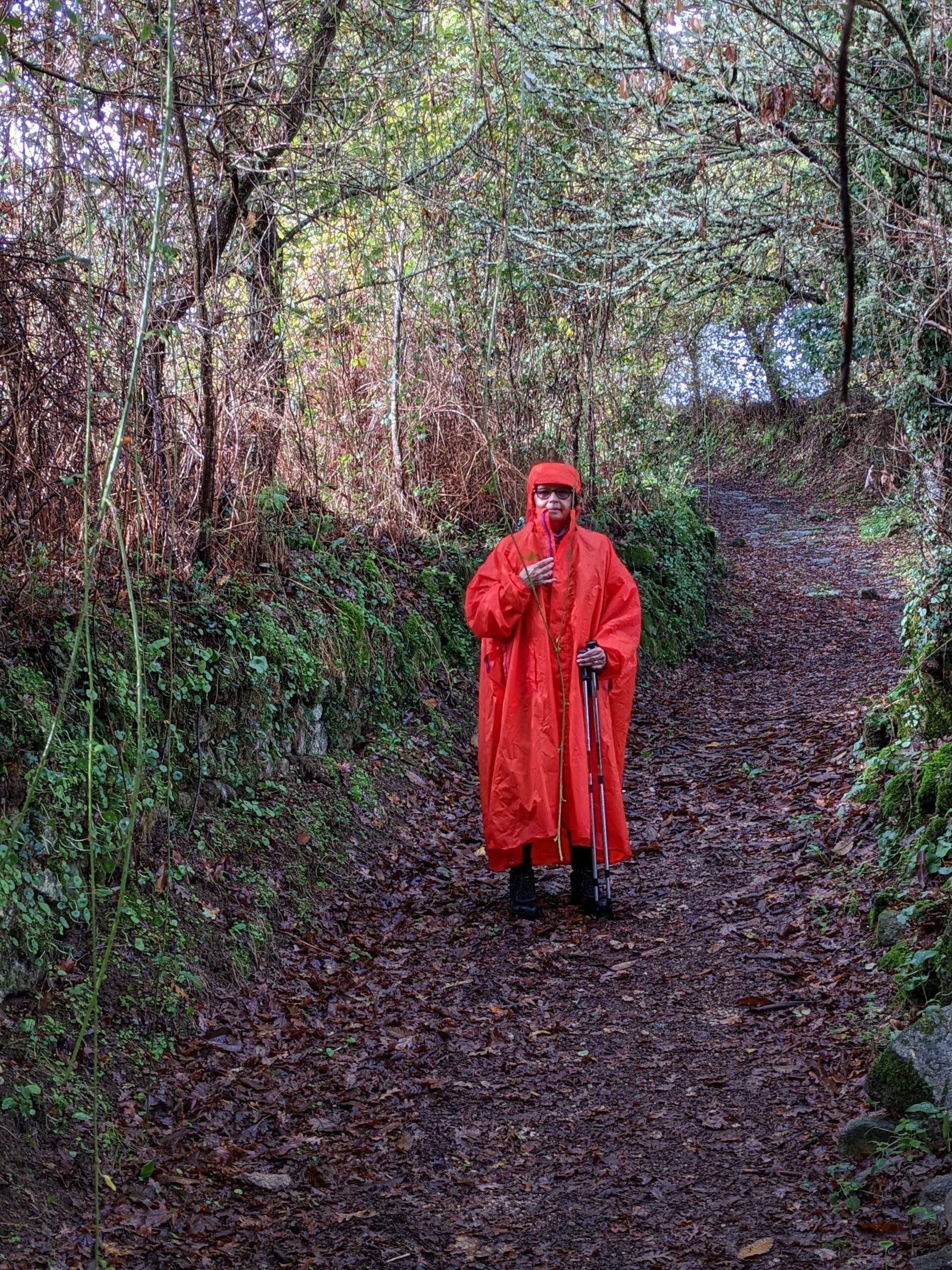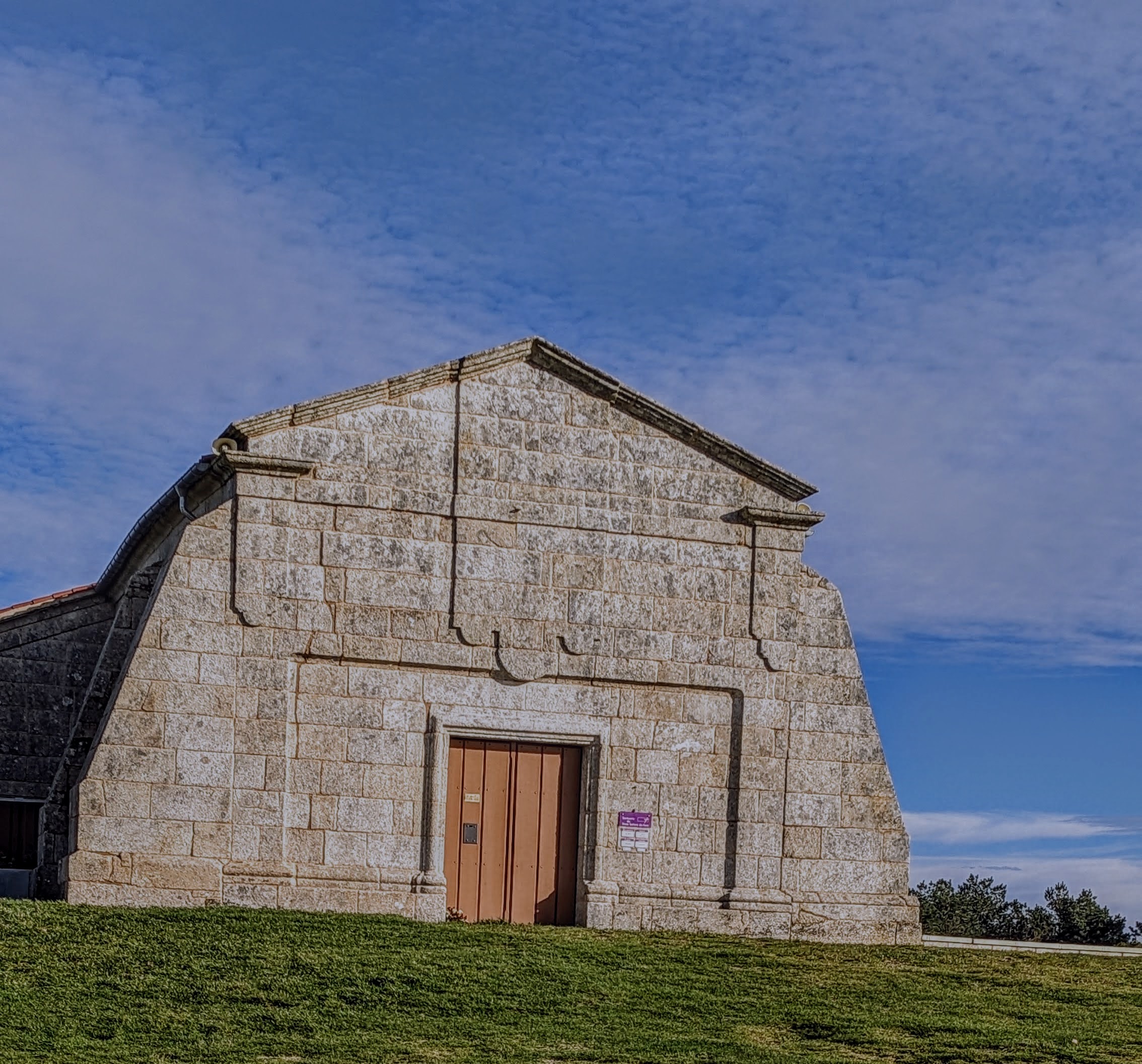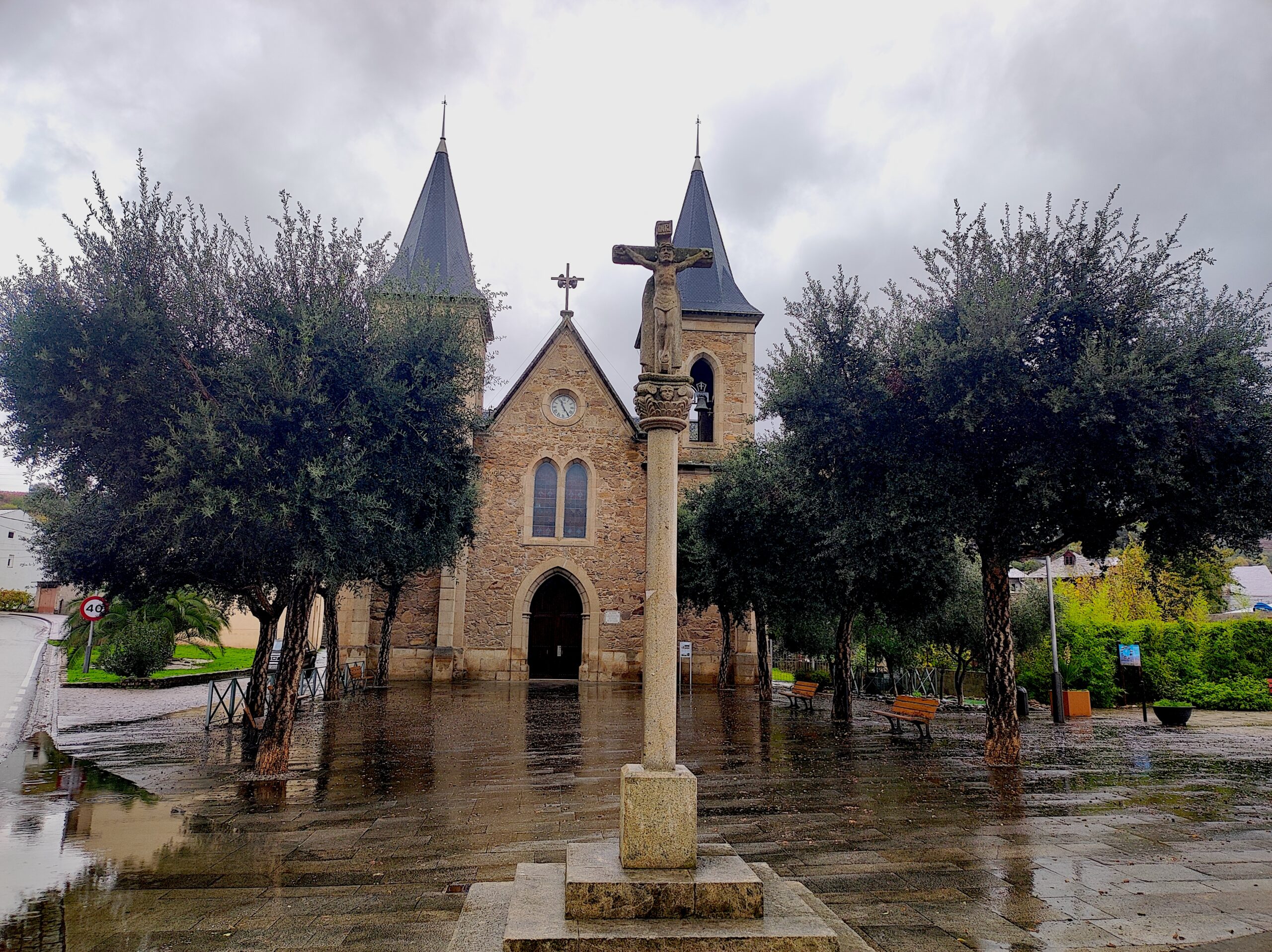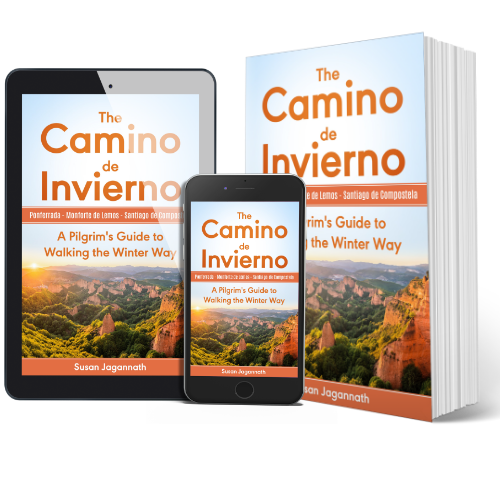The Invierno was no walk in the park. We knew that, we wanted a challenge, we wanted an uncrowded lesser known way. And we got it. We plotted and planned our winter camino carefully, but we still got surprised. I know that is a bit contradictory, but isn’t that what a pilgrimage entails. Being ready for the unexpected and be prepared are similarly contradictory, if you are ready and prepared, then nothing is unexpected, but of course it is. Everyone tells you how wonderful walking day after day , is..well, there are also problems.
Staying Dry
We expected heavy rains but we didn’t quite realise that flooding was common on the Camino de Invierno. We had rain clothes, and I was happy I had a poncho that allowed me to throw it over myself and my backpack. It also had side vents that I could open up, so that I didn’t overheat.
But my boots were wet everyday, within an hour. Gaiters might have helped. Anju was clever and had gaiters. We all had gaiters but they didn’t help and they were awkward to put on.
Solution – I took a pair of extra socks and changed halfway through the day – at least I had dry socks for a little way in mid walk. We were glad of our hair dryer – we used it on on our wet boots everyday!
Tackling the Terrain
The steep climbs and rugged paths were challenging. We were happy we had we trekking poles and had learnt to use them, They were vital in many parts as wet cobble stones are treacherous, and in many parts the path itself was a stream. Even though many paths had stepping stones in the middle, we often had to balance on the muddy steep sides.
Where to stay the night?
Albergue? Hostal or Hotel? We didn’t have a choice in several places. So we used any and all of the options from private rooms in an albergue, to luxury hotel in Monforte de Lemos. That used to be a historic monastery – so we were still sort of sticking to being pilgrims.
We were so glad we had prebooked – but some places were less than optimal, and some stages could have been different. My book has a few alternate plans for stages. What did we learn? Anywhere dry and warm to sleep is good, and if the stages uphill add kilometers to your calculation.
Hunger and Thirst
We were disappointed to have to hike after day in the rain without a hot drink, as there were no cafes open. But we ate well at the night stops and never missed a supermercado to pick up cake, bread and cheese. Anju ate a lot of salad, poor thing. For protein it was eggs or cheese, as even the famous Caldo Gallego had stock.
What did we learn? Food and drink is a privilege for a pilgrim. Give us this day our daily bread – and wine. Spain was indeed a living example of why bread and wine is the image of eternal life.
Humility
I learnt a lesson in humility, I could either be dry or fashionable. I chose the orange blob look, as I decided, staying well was more important than looking good for photos. So I have a great collection of my most unflattering photos!
Cerrado
“Closed” , my most unfavourite Spanish word. So many cultural and other places were shut, because we were too early, too late, or on the wrong day! We were unable to coordinate our times..maybe, in some places, like Monforte de Lemos, a rest day would have allowed us to visit some of the cultural sites.
Closed Churches and Chapels
All the churches and chapels were shut up tight, so we could not do the pilgrim visits we wanted. Except for Ponferrada and Monforte de Lemos, we found it impossible to do more than peer into churches. For me this was a huge disappointment.
In medieval times, many pilgrims were forced to go on pilgrimage as a penance for their sins. Maybe, our experiences allowed us to be more sympathetic to their travails.
A New Book is here
And you will find out more about these in that book, as well as more of our personal encounters.

